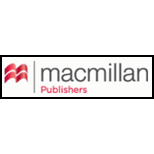
(a)
Interpretation:
The curved-arrow mechanism for the formation of
Concept introduction:
The reagent
(b)
Interpretation:
The reason as to why the reaction between
Concept introduction:
The reagent,
(c)
Interpretation:
Whether the reaction between
Concept introduction:
The reagent,
Want to see the full answer?
Check out a sample textbook solution
Chapter 22 Solutions
Organic Chemistry, Ebook And Single-course Homework Access
- (a) Isoleucine has been prepared by the following sequence of reactions. Give the structure of compounds A through D isolated as intermediates in this synthesis.(b) An analogous procedure has been used to prepare phenylalanine. What alkyl halide would you choose as the starting material for this synthesis?arrow_forwardAre the following halogenated or non- halogented?(a) Cyclohexyl hydrogen sulfate(b) p-Toluenesulfonic acidarrow_forwardEnalapril is an anti-hypertension "prodrug" (i.e, a drug precursor) that is inactive until the ethyl ester (arrow in figure) is hydrolyzed by esterases present in blood plasma. The active drug is the dicarboxylic acid ("enalaprilat") that results from this hydrolysis reaction. (a) Enalapril is administered in pill form, but enalaprilat must be akdministered intravenously. Why do you suppose enalapril works as a pill, but enalaprilat does not? EtOoC -NH CH3 HOOC Enalapril (b) Enalaprilat is a competitive inhibitor of the angiotensin-converting enzyme (ACE), which cleaves the blood-pressure regulating peptide angiotensin. ACE has a KM = 12 µM for angiotensin, which is present in plasma at a concentration of 75 µM. When enalaprilat is present at 2.4 nM, the activity of ACE in plasma is 10% of its uninhib- ited activity. What is the value of K; for enalaprilat?arrow_forward
- Answer ALL parts of this question. (a) Compound Z is a tertiary aromatic amine with the formula, C8H11N. Provide a chemical structure for compound Z. (b) Provide a reaction scheme for the preparation of nitrous acid. (c) Draw the structure of the product formed exclusively when nitrous acid reacts with Z. (d) Give a curly arrow mechanism for the preparation of the yellow azo-dye from the reaction of Z with benzenediazonium chloride.arrow_forward(Part 1) Using chem draw or any chemical drawing program, show the reactants and products of the following polymer reactions. You may use n to represent the number of units. Your figures should be in line angle. (Part 2) Draw the mechanism for at least one of the polyacrylamide and one of the sodium polyacrylamide reactions, being consistent in which counter reactant you use. (a) polyacrylamide and water (b) polyacrylamide and isopropyl alcohol (c) polyacrylamide and saturated sodium chloride (d) sodium polyacrylamide and water (e) sodium polyacrylamide and isopropyl alcohol (f) sodium polyacrylamide and saturated sodium chloridearrow_forwardDraw the structures of the following compounds. (a) isobutyl bromidearrow_forward
- (a) Which is more reactive towards Electrophilic aromatic substitution (EAS)? (b) Which of the following is a a meta-substituted compound? (c) Which is the least reactive towards Electrophilic aromatic substitution (EAS)? (d) Which is an ortho-substituted compound?arrow_forward(a) Which is the correct structure of the alkyl halide substrate? (b) Which is the correct structure of the nucleophile?arrow_forwardExplain the following statements. You must use chemical equations to justify your explanation. (ii) (I) Phenol is more acidic than cyclohexanol.arrow_forward
- only answer (vii) (viii) (b) thank youarrow_forwardQuinapril (trade name Accupril) is used to treat high blood pressure and congestive heart failure. One step in the synthesis of quinapril involves reaction of the racemic alkyl bromide A with a single enantiomer of the amino ester B. (a) What two products are formed in this reaction? (b) Given the structure of quinapril, which one of these two products is needed to synthesize the drug?arrow_forwardAnswer BOTH parts of this question. (a) Briefly explain the origin of amine basicity. Using resonance structures explain why aniline is a weaker base than methylamine. (b) Draw the structure of compound X and provide a curly arrow mechanism for the reduction in Scheme 1. X 1. NaBH4 2. H₂O Scheme 1 OHarrow_forward
 ChemistryChemistryISBN:9781305957404Author:Steven S. Zumdahl, Susan A. Zumdahl, Donald J. DeCostePublisher:Cengage Learning
ChemistryChemistryISBN:9781305957404Author:Steven S. Zumdahl, Susan A. Zumdahl, Donald J. DeCostePublisher:Cengage Learning ChemistryChemistryISBN:9781259911156Author:Raymond Chang Dr., Jason Overby ProfessorPublisher:McGraw-Hill Education
ChemistryChemistryISBN:9781259911156Author:Raymond Chang Dr., Jason Overby ProfessorPublisher:McGraw-Hill Education Principles of Instrumental AnalysisChemistryISBN:9781305577213Author:Douglas A. Skoog, F. James Holler, Stanley R. CrouchPublisher:Cengage Learning
Principles of Instrumental AnalysisChemistryISBN:9781305577213Author:Douglas A. Skoog, F. James Holler, Stanley R. CrouchPublisher:Cengage Learning Organic ChemistryChemistryISBN:9780078021558Author:Janice Gorzynski Smith Dr.Publisher:McGraw-Hill Education
Organic ChemistryChemistryISBN:9780078021558Author:Janice Gorzynski Smith Dr.Publisher:McGraw-Hill Education Chemistry: Principles and ReactionsChemistryISBN:9781305079373Author:William L. Masterton, Cecile N. HurleyPublisher:Cengage Learning
Chemistry: Principles and ReactionsChemistryISBN:9781305079373Author:William L. Masterton, Cecile N. HurleyPublisher:Cengage Learning Elementary Principles of Chemical Processes, Bind...ChemistryISBN:9781118431221Author:Richard M. Felder, Ronald W. Rousseau, Lisa G. BullardPublisher:WILEY
Elementary Principles of Chemical Processes, Bind...ChemistryISBN:9781118431221Author:Richard M. Felder, Ronald W. Rousseau, Lisa G. BullardPublisher:WILEY





